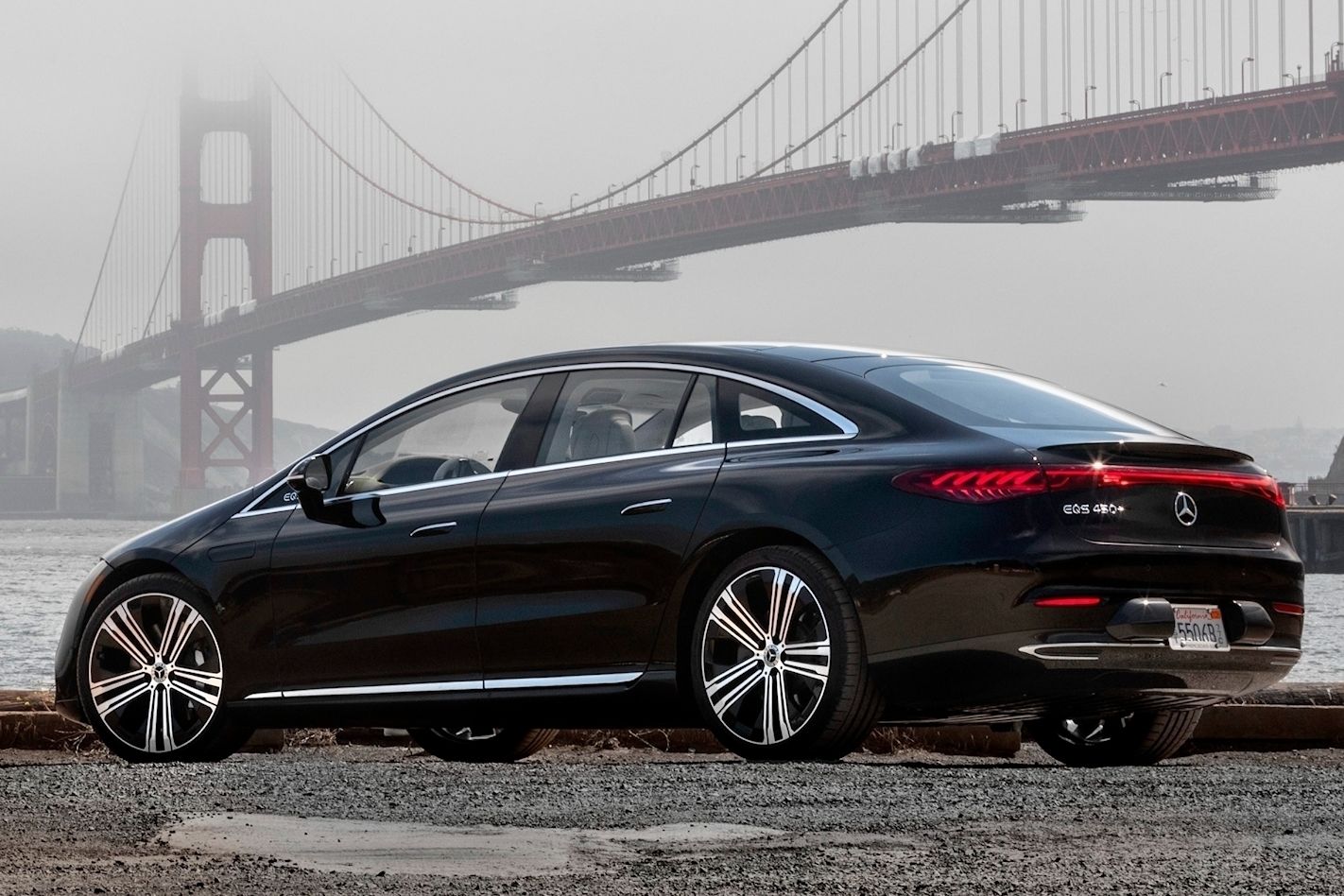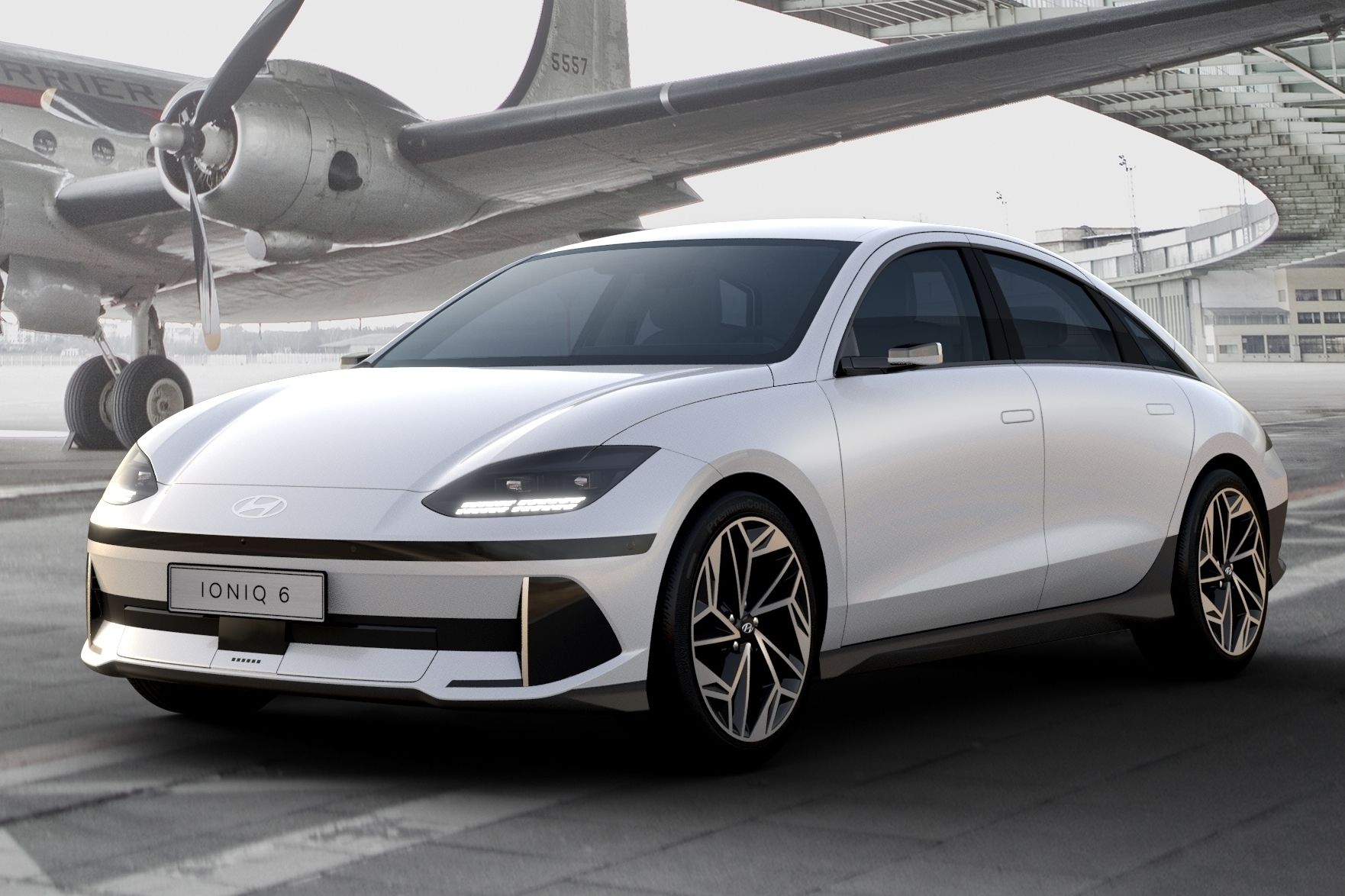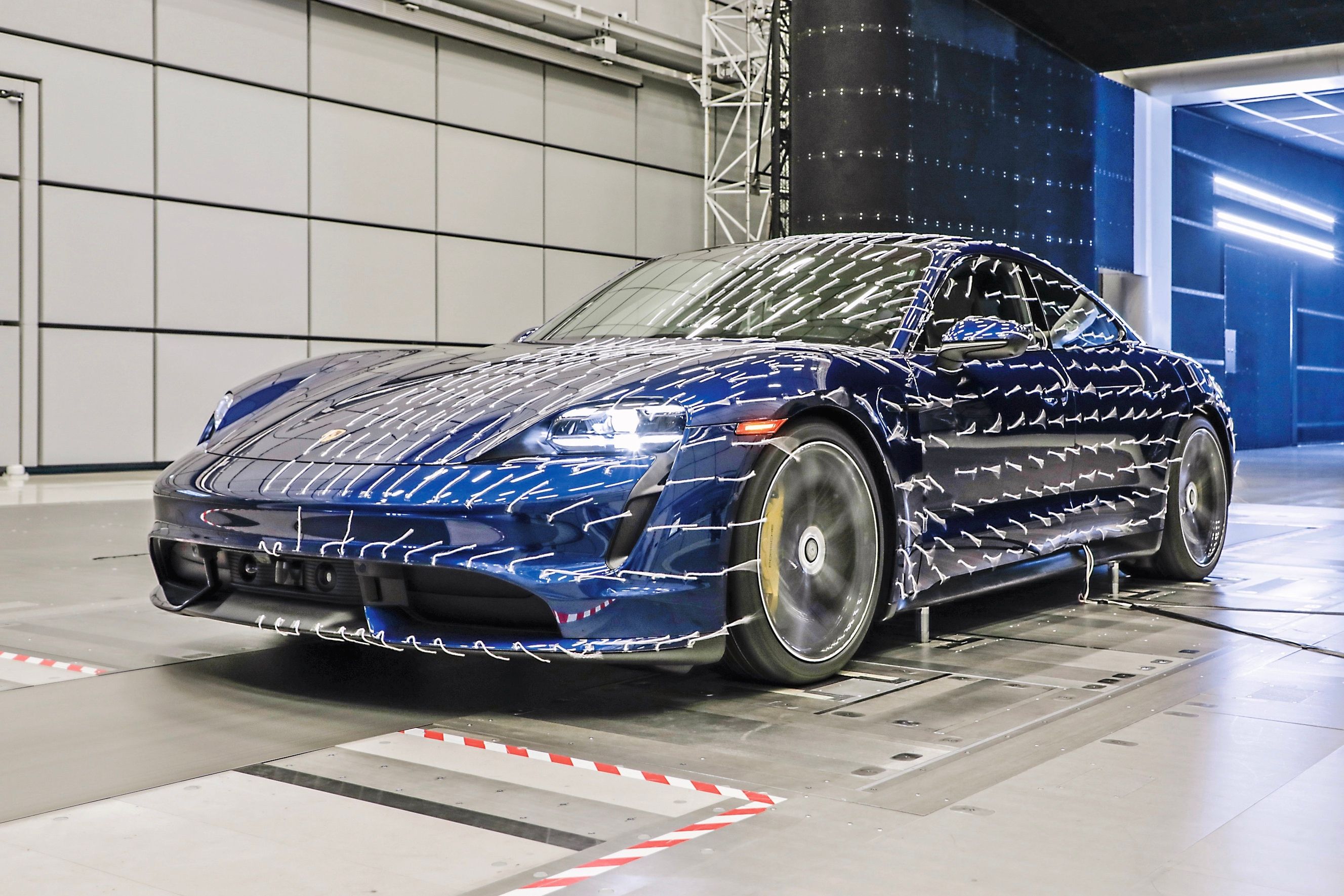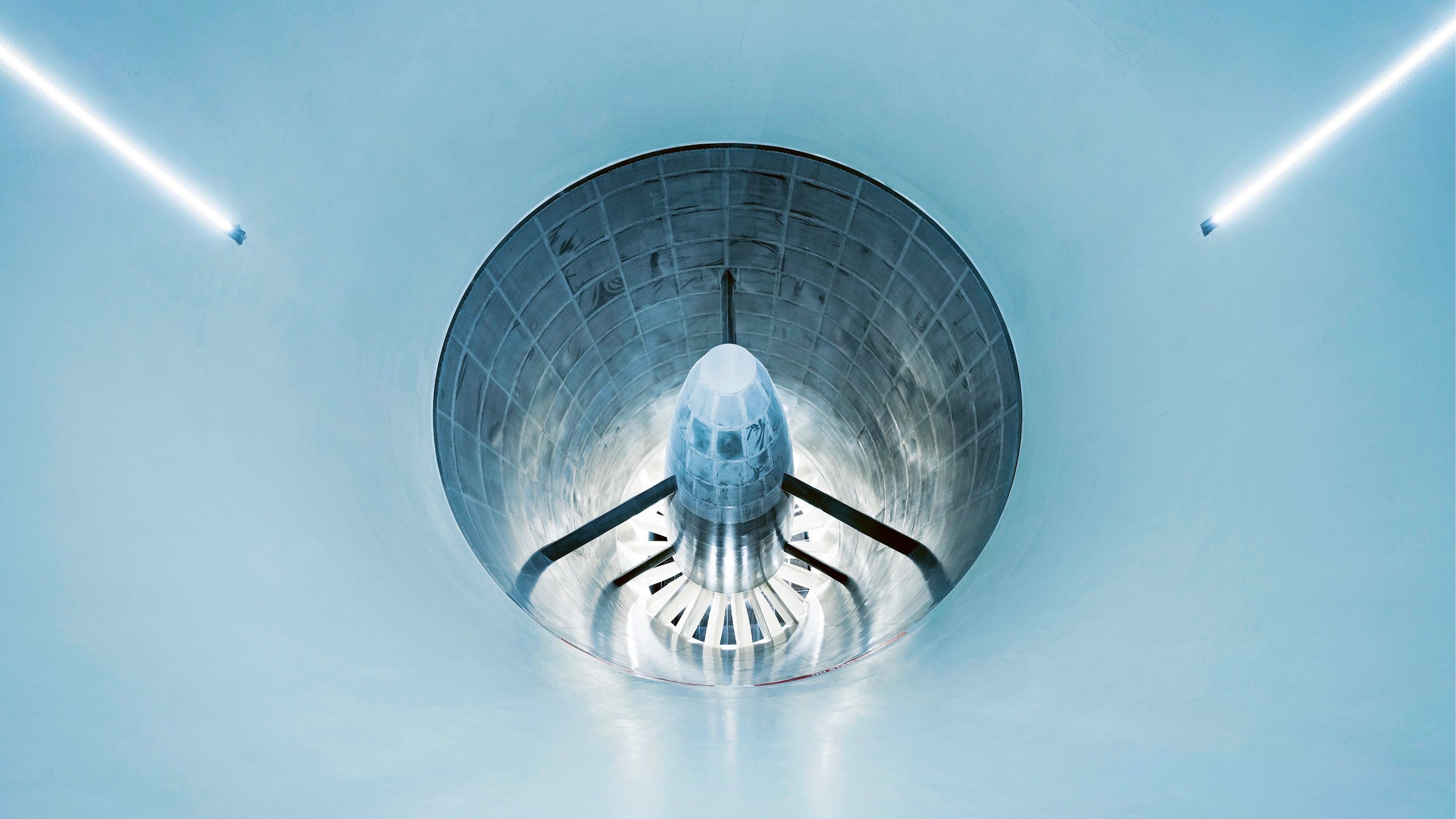
Most of us don't really pay attention to aerodynamics unless it has to do with the giant active wing attached to the rear of the all-new Porsche 911 GT3 RS. We only really pay attention when a manufacturer claims that a car produces enough downforce for a car to drive upside down, yet no manufacturer has ever proved that it's possible.
Aerodynamic drag is set to become a big talking point in the near future because it has a big impact on range. In an ICE car, it doesn't matter as much, as you can simply brim the tank and be on your merry way. But to eke every single mile out of an EV, it has to be slippery.
Audi launched the 100 40 years ago. It was the most streamlined production sedan in the world at the time, and the German manufacturer boasted that it had a Cd value of 0.30. Nobody knew what it meant, and most of us still don't. We just know that lower is better.
A vehicle's aerodynamic drag is determined by the product of its frontal area and Cd (drag coefficient) value. In engineering terminology, the Cd is a dimensionless quantity used to quantify an object's drag or resistance in a fluid environment. You calculate it by dividing the drag by the quantity. You then get the ratio of the drag force to the force produced by the dynamic pressure times the area.
If you can't grasp that, it doesn't matter. Just know that lower is better. The Audi's 0.30 was impressive, but these days a Porsche Taycan has a Cd value of 0.33. The most aerodynamically efficient thing on the planet is a water drop, which has a Cd value of 0.05. It explains why so many new EVs like the Mercedes-Benz EQS and Hyundai Ioniq 6 seem to be inspired by drops or half a boiled egg if you like.
"At roughly 50 mph or more, [aerodynamic drag] becomes more important than the rolling resistance of the tires," explains Marcel Straub, Lead Engineer of Aerodynamics and Thermal Management at Porsche Engineering. "And because it increases quadratically with speed, aerodynamics is quite decisive for fuel consumption, particularly when driving on the highway."
Ever since Audi started focusing on the aerodynamic properties of everyday cars in the '80s, the wedge shape has been standard. It minimizes the wake behind the vehicle and reduces negative pressure, which keeps the Cd value low.
The Opel Calibra came in at 0.26 in 1990, and 10 years later, the Audi A2 boasted a value of 0.25. "Those were real leaps ahead in aerodynamics," recalls Prof. Andreas Wagner, Chair of Automotive Engineering at the University of Stuttgart.
But why the sudden push now that everything is going EV? Simply put, EVs are more efficient. A gas engine has a thermal efficiency of more than 50%, but when you drop it into a car, it drops to between 25% and 30%. There are exceptions, like the Mercedes-AMG One, but they are exceedingly rare. EVs have a thermal efficiency of 85% to 90%.
"Electric powertrains have much higher efficiency than internal combustion engines, so other energy consumption factors become much more significant," explains Dr. Thomas Wiegand, Manager Aerodynamics - Research & Development at Porsche AG. "In the WLTP driving cycle, aerodynamics account for 30 to 40 percent of the losses in electric cars, as opposed to less than ten percent in a vehicle with a diesel or gasoline engine. And because the average speed in realistic cycles is even higher than in the WLTP, this figure is likely to be even higher than 50 percent when electric vehicles are driven in real-world situations."
Thankfully, you can play around a bit more with the shape of an EV. A straightforward example is the underbody. In an ICE vehicle, the air must cool several components underneath the car, creating turbulence. These components aren't present in an EV, so the underbody can be completely smooth.
EV motors also generate less heat, which means less airflow is required through the front. Because these cars rely less on air cooling, manufacturers can play around with active aerodynamics.
Marcel Straub (Porsche) even believes that cars will change shape in the future. "The rear end could, for example, become more angular at high speeds to form sharper separation edges. New shape-memory materials could provide the basis for this. They change their geometry according to temperature or applied voltage."
Engineers and designers can now test their designs easier than before. "CFD simulations have become enormously important in the last 20 years," Wagner says. "People have better understood the mathematical methods, developed more accurate tools, and also increased the processing power of the computers."
But, as the Porsche Taycan pictured below demonstrates, there are still some things a simulation can't accurately predict. Sometimes you still have to use a ball of yarn and some tape.
Artificial intelligence will be helpful in the future, however.
"At the end of development, we are obliged to specify individual consumption or range values for each vehicle variant, in which weight and rolling resistance play a role in addition to the aerodynamics," says Wiegand. "We, therefore, have to generate large volumes of data for the aerodynamics component."
At the same time, many measurements from the wind tunnel and simulation results are already available from the previous development phases. This data will be better structured in the future and be analyzed using modern methods.
"AI algorithms could generate new data from a stock of existing data through interpolation and extrapolation. This would allow us to plan specific experiments and reduce their number. And we would no longer need to measure all variants for classification."






